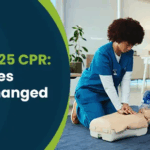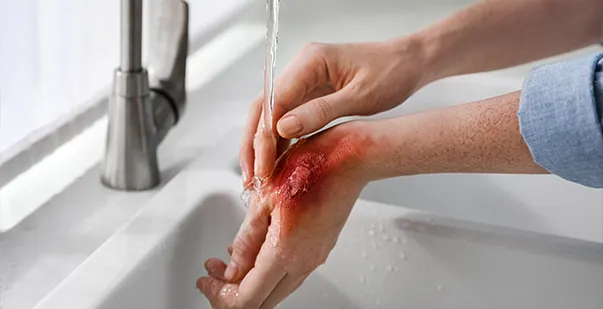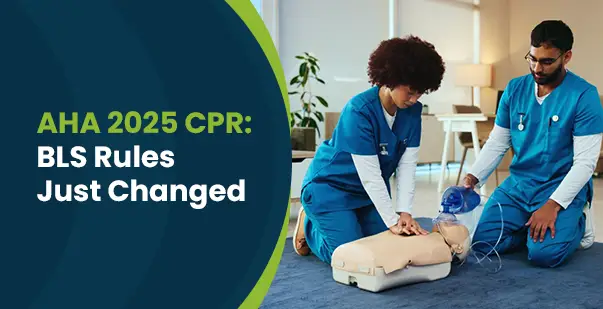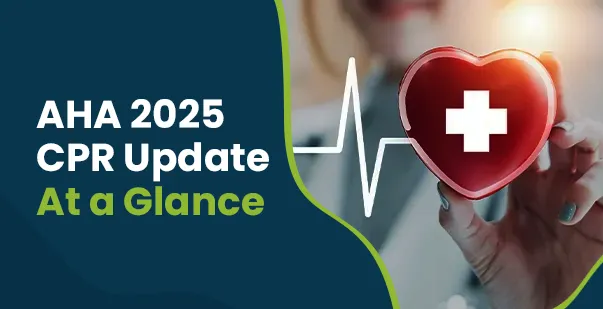Burn injuries are painful and challenging, with second-degree burns being among the most common. These burns affect both the outer skin layer (epidermis) and the layer beneath (dermis), leading to redness, blisters, and swelling. They are often caused by hot liquids, prolonged sun exposure, or contact with hot surfaces.
Although painful, second-degree burns are treatable with proper care, which can speed healing and reduce complications. Interestingly, they account for 70–80% of all burn injuries, highlighting their prevalence and the need for awareness. Around 50–70% of burn patients have second-degree burns, making it essential to understand their treatment and healing process.
In this article, we’ll discuss what second-degree burns look like, how to treat them, and tips for a smoother recovery.
What is Second Degree Burn?
A second-degree burn is a mild to moderate injury, but its seriousness depends on its size, location, and the area of the body it affects.
Burns are classified by how deep they damage the skin. First-degree burns affect only the outer layer (epidermis). Second-degree burns go deeper, affecting both the outer layer and the second layer (dermis). Third-degree burns are the most severe, damaging the epidermis, dermis, and the deepest layer of skin, called the hypodermis (or subcutaneous layer).
Second-degree burns can range from minor injuries, like a deeper burn caused by a stove or iron, to very serious and life-threatening cases. They are more dangerous when they cover large areas of the body, involve sensitive parts like the joints, face, hands, genitals, or buttocks, or occur in someone with a weakened immune system, such as a person undergoing cancer treatment like chemotherapy.
What Does Second Degree Burn Look Like?
A second-degree burn, also known as a partial-thickness burn, affects both the outer layer of the skin (epidermis) and the underlying layer (dermis). These burns are characterized by:
- Blisters: Fluid-filled blisters often develop, which may break open, giving the area a wet or weeping appearance.
- Redness and Discoloration: The skin typically appears deep red to dark brown.
- Shiny, Moist Appearance: The damaged skin may look shiny and moist due to the loss of the epidermis.
- Swelling: Inflammation and swelling are common in the affected area.
- Pain: Second-degree burns are usually quite painful because of nerve involvement in the dermis.
These burns can result from various causes, including scalding from hot liquids, direct contact with flames, or exposure to hot objects.
It’s important to note that while second-degree burns can often be treated at home if they are small (less than 3 inches in diameter), burns that are larger or located on the face, hands, feet, groin, or over major joints should receive prompt medical attention.
Master First Aid Skills
First Aid Certification course that prepares you for real-life situations.
Common Locations of 2nd Degree Burn
Where a second-degree burn happens depends on what caused it. Common places you might get one include your:
1. Hands and Fingers
Second-degree burns on hands and fingers often result from contact with hot surfaces, liquids, or chemicals. For example, accidentally spilling boiling water while cooking can cause such burns.
These burns damage both the outer and underlying layers of skin, leading to redness, swelling, and the formation of blisters. The affected area may appear shiny and moist. Pain is typically intense, and the skin may peel as it heals.
Proper treatment involves cooling the burn with cool water, covering it with a clean bandage, and seeking medical attention if necessary.
2. Face
The face is particularly vulnerable to burns due to its frequent exposure and lack of protective clothing. Burns in this area can result from hot liquids, flames, or chemicals.
Facial burns often lead to significant scarring and may impair essential functions like breathing, swallowing, and speaking. On top of that, they can cause severe psychological distress due to visible disfigurement.
In the United States, approximately 486,000 fire or burn injuries were treated in emergency departments between 2011 and 2015, with many involving the face.
3. Arms and Elbows
Accidental contact with hot surfaces, liquids, or steam can lead to burns on the arms and elbows. For instance, spilling hot beverages or touching heated kitchen appliances may cause such injuries.
These burns often result in redness, swelling, and blisters, leading to discomfort and pain. Immediate cooling of the affected area with cool (not cold) water and seeking medical attention are essential steps in managing these injuries.
Proper first aid can help reduce pain and prevent complications. It’s important to avoid using ice or very cold water, as this can worsen the damage.
4. Chest and Abdomen
The chest and abdomen are vulnerable to second-degree burns from various sources. Hot liquids, such as boiling water or splattering oils, can cause burns if they spill onto these areas.
On top of that, flames from fires or cooking accidents can lead to burns on the chest and abdomen. Exposure to certain chemicals, like strong acids or alkalis, may also result in burns if they come into contact with the skin.
In some cases, electrical burns can occur if electrical equipment malfunctions and causes burns on the chest or abdomen.
5. Feet and Toes
Burns to the feet can occur when stepping on hot surfaces, walking barefoot on heated ground, or coming into contact with hot liquids. These injuries are particularly concerning for individuals with diabetes, as they may have reduced sensation in their feet, increasing the risk of burns.
A study analyzing 116,796 adult burn cases found that 7% involved foot burns, with 16% of these cases occurring in patients with diabetes. Moreover, 5.6% of diabetic foot burn cases required amputation, compared to 1.5% in non-diabetic cases.
Foot burns can lead to complications such as infections, prolonged healing, and, in severe cases, amputation. Preventive measures include wearing protective footwear, especially in environments with potential heat sources, and maintaining good foot care practices.
Individuals with diabetes should be particularly vigilant, as they are at higher risk for severe outcomes from foot burns.
6. Back
The back is vulnerable to second-degree burns due to exposure to hot surfaces, liquids, or flames. For instance, leaning over a hot stove or grill can result in burns on the back.
Moreover, spills of hot beverages or cooking oils can cause burns when they come into contact with the back. Injuries from open flames, such as those from a campfire or fireplace, can also lead to burns on the back.
These burns often cause redness, blistering, and significant pain in the affected area.
How to Treat 2nd Degree Burn
Immediate first aid for second-degree burns is crucial to alleviate pain, prevent infection, and promote healing. Follow these steps promptly:
Step 1. Cool the Burn
Promptly cooling a second-degree burn is essential to reduce skin temperature and alleviate pain.
Gently place the burned area under cool, running water for 10 to 15 minutes. This helps dissipate heat and minimizes tissue damage. Avoid using ice or very cold water, as they can cause further harm.
If running water isn’t available, apply a cool, wet cloth to the burn. This immediate action can significantly improve healing outcomes and decrease the risk of complications.
Step 2. Remove Constrictive Items
Removing jewelry, belts, and tight clothing from a burn area is essential because burns can cause rapid swelling. Items like rings or tight garments can constrict the swollen area, leading to restricted blood flow and further tissue damage.
On top of that, jewelry and clothing can trap heat against the skin, potentially worsening the burn. It’s important to act quickly and gently to remove these items before swelling begins.
However, if clothing is stuck to the burn, do not attempt to remove it, as this can cause more harm.
Step 3. Clean the Burn
Before cleaning a second-degree burn, wash your hands thoroughly to prevent infection. Gently cleanse the burn with mild soap and cool water, avoiding scrubbing to protect delicate skin.
Keep in mind to refrain from breaking any blisters, as they shield the underlying tissue. After cleaning, pat the area dry with a clean cloth or sterile gauze.
You should also avoid applying sprays, butter, or home remedies, as they can trap heat and introduce bacteria, potentially leading to infection.
Step 4. Apply Ointment
After cleaning a second-degree burn, gently apply a thin layer of petroleum jelly or an antibiotic ointment like bacitracin to the affected area. This keeps the wound moist, promotes healing, and helps prevent infection.
Avoid using ointments with fragrances or alcohol, as they can irritate the skin. Apply the ointment to a non-stick dressing, then place it on the burn.
You also need to change the dressing daily or if it becomes wet or dirty.
Step 5. Bandage the Burn
After applying ointment to the burn, cover it with a sterile, non-stick bandage or clean cloth. This protects the area from dirt and bacteria, reducing infection risk. Wrap the bandage loosely to avoid pressure on the burned skin.
Change the dressing daily or whenever it becomes wet or soiled. Keeping the burn covered helps maintain moisture, which promotes healing and reduces scarring. Avoid using materials that may stick to the burn, as removing them can cause further damage.
Remember: If the burn is large or on sensitive areas like the face or joints, seek medical attention promptly.
Step 5. Manage Pain
Managing pain and preventing infection are important when treating second-degree burns.
Over-the-counter pain relievers like acetaminophen or ibuprofen can help reduce discomfort. Follow the recommended dosages on the label. If pain persists or is severe, consult a healthcare professional for further advice.
Keep the burn clean and covered with a sterile, non-stick bandage. Change the dressing daily or whenever it becomes wet or soiled. Avoid breaking any blisters, as they protect against infection. If you notice increased redness, swelling, pus, or fever, seek medical attention promptly.
Recovery Time of Second-degree Burns
Recovering from second-degree burns can take anywhere from a few days to several weeks. If there are complications, recovery might take longer.
How you take care of the burn at home depends on how bad the burn is and your overall health. It’s important to follow the instructions from your doctor on how to manage the burn.
To help recover faster and ease the pain, try these steps:
- Take over-the-counter (OTC) pain relievers like ibuprofen or acetaminophen.
- Keep the burn clean and covered.
- Once the wound has closed and stopped draining, apply moisturizer regularly to speed up healing and reduce scarring.
- Use an OTC antibiotic ointment to prevent infection and keep the burn clean.
- Don’t rub, scratch, or pick at the burn, as this can reopen the wound and increase the risk of infection.
If you develop a fever, notice red streaks around the burn, or feel like your condition is getting worse, you may have an infection. In this case, see a doctor right away.
Take Action for a Quick and Safe Recovery from Second-Degree Burns
Second degree burns are very painful but with appropriate treatment other than neglecting them they can heal adequately. One such proper way is through elbow grease which is important to earn such injuries. Prevention of scars can be done by using ointments and taking good care of the skin after the wound heals. If the scars don’t fade in a time frame they are supposed to, seek help from a doctor. To carry out this procedure right, putting trust in elbows and proper treatment is important to earn results that are worthwhile.
First Aid Training Made Easy
Learn essential first aid care from anywhere with our online course
FAQ
1. How do you tell if a burn is 1st, 2nd, or 3rd degree?
Burns are classified based on the depth of skin damage:
1st-degree burns affect only the outer layer of skin (epidermis). They cause redness, pain, and minor swelling—like a mild sunburn.
2nd-degree burns extend into the second skin layer (dermis) and often cause blisters, severe pain, swelling, and a red or splotchy appearance.
3rd-degree burns go through the dermis and may damage underlying tissues. The area may appear white, charred, leathery, or numb due to nerve damage. These burns are a medical emergency.
2. How long does a 2nd-degree burn take to heal?
Most 2nd-degree burns heal in 2 to 3 weeks, depending on the severity and location. Superficial 2nd-degree burns may heal faster, while deeper ones can take longer and may result in scarring. Keeping the wound clean and properly dressed can support healing and reduce the risk of infection.
3. Should you keep a burn covered or let it breathe?
It’s best to keep a burn covered with a sterile, non-stick bandage. Covering protects the area from infection, helps retain moisture, and promotes faster healing. Allowing a burn to “breathe” (remain uncovered) can increase the risk of infection and slow healing, especially for anything beyond a mild first-degree burn.









